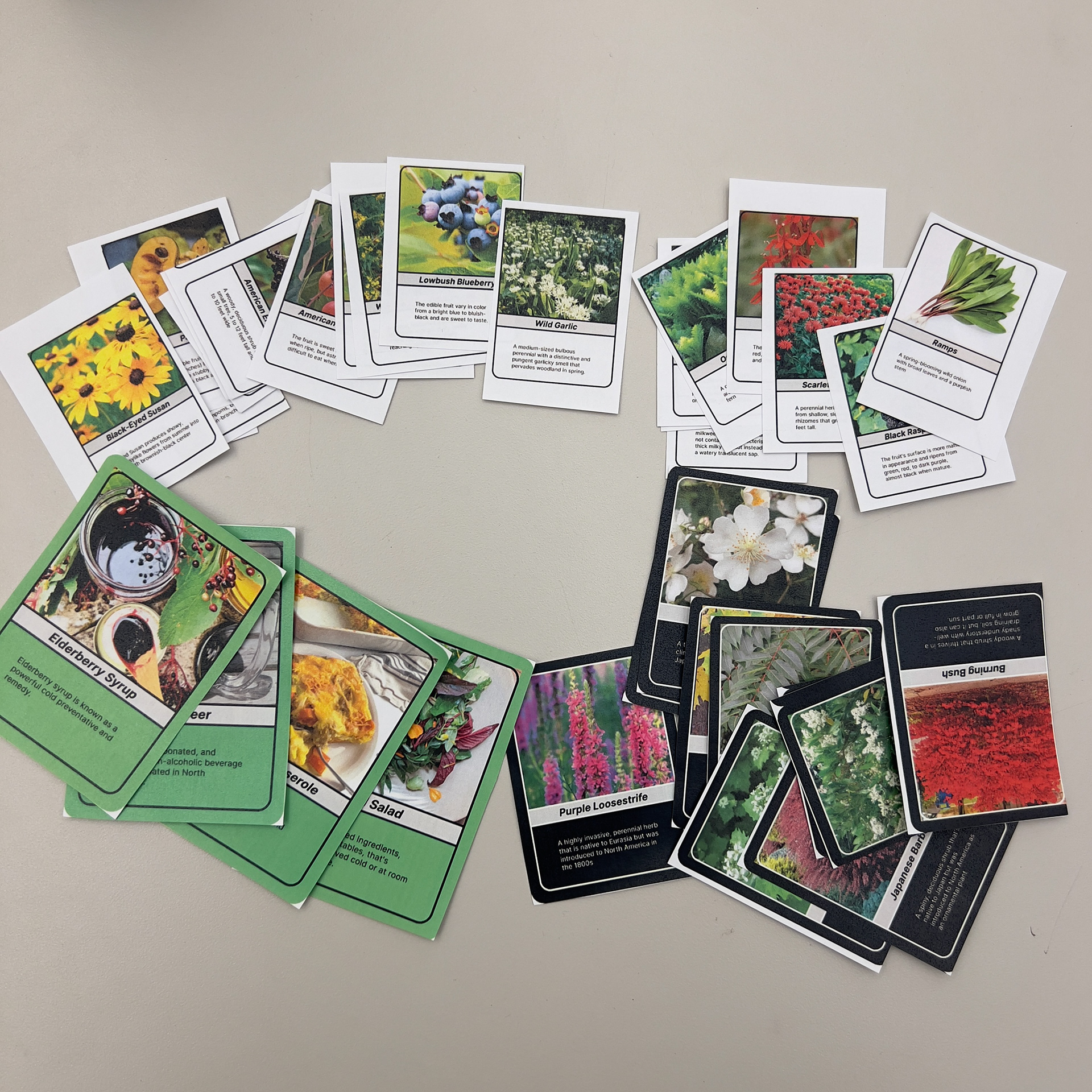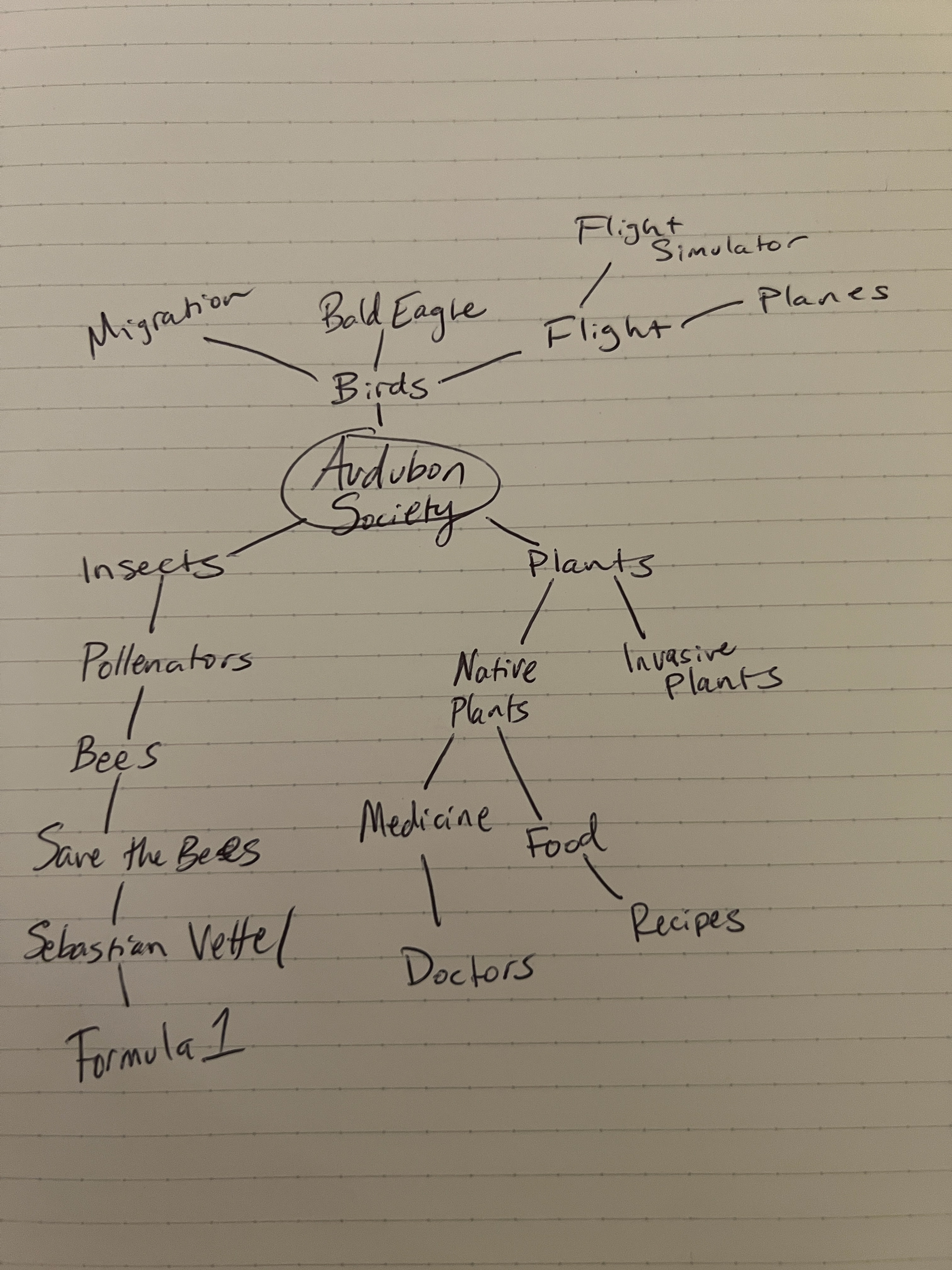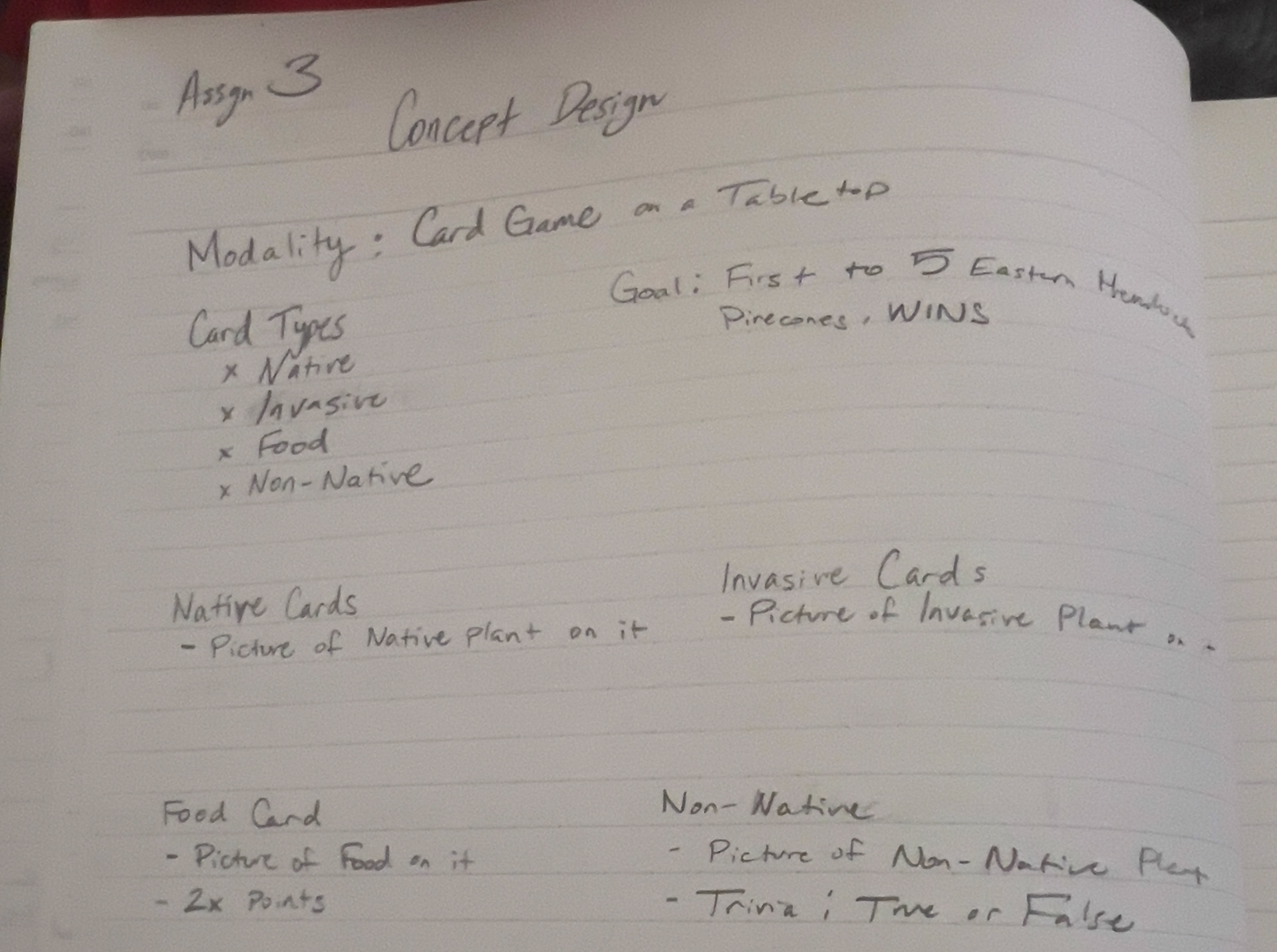


Culinary Botany: Game Design for Environmental Awareness
Project Type: Game Design, Card Game
Team: Solo Project
Client: Audubon Society of Western Pennsylvania
Duration: 3 Weeks
Platform & Tools: Cards & Physical Assets
Project Brief: The project involved a designing a game to educate players about native, non-native, and invasive plant species while fostering curiosity and promoting sustainable practices.
Project Outcome: A transformative card-based matching game that bridges environmental education with engaging gameplay.
Project Goals
Increased Curiosity
It is more important that players walk away curious to learn more about native plants rather than the game doing all of that lifting. Use the game to foster that curiosity and set them up to WANT to learn more afterward, rather than front load all of the details and content
Understanding Key Terms
Players should come away with the new insights of “Native Plants” and “Non-Native Plants”
Awareness of Plant Types
There’s nuance to some plant types. Players should come away knowing that there are 3 main categories: Native Plants, Non-Native Plants, and Invasive Plants
Research. So. Much. Research.
Key Findings
If you want a deeper look into the reasoning behind Culinary Botany, read my Theory Paper.
• Educational games increased participants' interest in plants and their perceived competence in identifying plants.
• Playing games improved participants' actual knowledge of plant species, allowing them to correctly identify most tree species in a real-world setting.
• A game-based approach can help reduce "plant blindness" and promote knowledge of plant diversity, contributing to the UN Sustainable Development Goals.
• An education-based matching game significantly improved players’ knowledge about plants, helping to solve the problem of “plant-blindness.”
Scholarly Articles
• Shelef, O., Weisberg, P.J., & Provenza, F.D. (2017). The Value of Native Plants and Local Production in an Era of Global Agriculture. Frontiers in Plant Science, 8.
• Moerman, D.E. (1998). Native American Ethnobotany.
• Moerman, D.E. (1996). An analysis of the food plants and drug plants of native North America. Journal of ethnopharmacology, 52 1, 1-22.
• Lindemann-Matthies, P., Heber, E., & Remmele, M. (2024). Find the Plant—An Educational Game Fosters Plant Species Literacy. Sustainability.
• Borsos, É. (2018). The gamification of elementary school biology: a case study on increasing understanding of plants. Journal of Biological Education, 53, 492 - 505.
• Chen, M., Wang, S., Chen, Y., Chen, X., & Lin, Y. (2020). A Preliminary Study of the Influence of Game Types on the Learning Interests of Primary School Students in Digital Games. Education Sciences.
Ideation




Concept ideas from Mindmapping (photo 1), Crazy 8s (photo 2), and Concept Notes (photos 3 & 4).
When thinking about how to create this game, I employed 3 strategies:
1. Mind Mapping - this would get my creative juices flowing by finding words that connected to the Audubon Society.
2. Crazy 8s - the Mind Mapping was used to inform how I wanted to present the game. Crazy 8s are extremely hard to due given the time constraint. However, I recognized that the main modality of choice was a card game.
3. General Notes & Ideation - I found any space I could possibly write on and got to work on how to make this game enjoyable. Would I reference other game mechanics like “Disney Dreamlight Valley”? Or maybe a matching game based on the research I’ve read? The world was my oyster.
Until I finally came to a conclusion:
Let’s make a Matching Game!
Prototyping & Playtesting
Picture of PickUp Sticks physical assets, the 4 colored wooden planks
Prototype 1 - PickUp Sticks
A minimalist-design game that involved 4 colored wooden planks. Each plant had a different type:
• Green - Native Plants
• Blue - Food & Medicine
• Red - Non-Invasive Plants
• Black - Invasive Plants
The goal is to pick up and discard wooden planks until a player has all of their designated color.
Player Feedback
Design was extremely minimalistic which presented a “Catch-22”
• As I didn’t want to overwhelm the player, I ended up confusing them
• As I didn’t want to overwhelm the player, I ended up confusing them
“I felt that like I was just trying to get my color. I didn’t really learn anything.”
Takeaways
While Players said they were having fun, the looks on their faces were more of confusion.
The fact that they were just picking up and putting down different colored sticks didn’t inspire curiosity. Rather it spurred competition.
Picture of Culinary Botany v1 cards
Prototype 2 - Culinary Botany v1
A matching game that 3 types of cards, separated by color:
• Green - Recipe Cards
• White - Native Plants (can be used to make the recipe)
• Black - Invasive Plants (can be played to skip a players turn)
Each card includes a descriptions of the corresponding plant for information and clues as to what recipe they go with.
The goal is to make your recipe based off the clues in the description of the cards.
Player Feedback
“I don’t know if I’m making the right recipe.”
“Do these plants actually go in these recipes?”
“I could just ‘win’ on turn 1 if I believe that my recipe is complete with my the cards in my hand."
“Do these plants actually go in these recipes?”
“I could just ‘win’ on turn 1 if I believe that my recipe is complete with my the cards in my hand."
Takeaways
Once again, players were having fun. This was evident by their facial expression and laughter. Players enjoyed using the Invasive Plant cards to skip other people as that is what brought out the most expression (oohs and aahs).
However, there was still an air of confusion throughout the playtest. Players were unsure if they were creating the right recipe because they didn’t/don’t know about the what native plants go into their recipe.
Picture of Culinary Botany v2 card, now including "badges" for easier matching
Final Deliverable - Culinary Botany v2
A matching game that 3 types of cards, separated by color:
• Green - Recipe Cards
• White - Native Plants (can be used to make the recipe)
• Black - Invasive Plants (can be played to skip a players turn)
Each card includes an icon/indicator for which recipes can be made with the subsequent Natural Plant cards.
The goal is to make your recipe based off the icons/indicators on the cards.
Player Feedback
“I didn’t know these plants can be in a Wild Salad. That’s so cool.”
“That pear tree is the one that smells bad right? I didn’t know it was invasive! I’m kinda glad we can get rid of them now.”
“If I go outside right now and grab these plants, can I make this Root Beer?”
“Maybe try taking some cards out because someone could win on Turn 1 if they’re lucky.”
“That pear tree is the one that smells bad right? I didn’t know it was invasive! I’m kinda glad we can get rid of them now.”
“If I go outside right now and grab these plants, can I make this Root Beer?”
“Maybe try taking some cards out because someone could win on Turn 1 if they’re lucky.”
Takeaways
The player feedback was very positive this time around. Players felt both happy and curious. The intended transformation was finally shining through.
Players did comment on the amount of Native Plant cards, saying that there are too many which might cause the game to end too early, causing disappointment in players.
Players did comment on the amount of Native Plant cards, saying that there are too many which might cause the game to end too early, causing disappointment in players.
Next Steps
The game is good...but it could be better.
Further Game Balancing
Taking stock in the amount of cards and how they play will be necessary to get the best experience.
Changing the number of Invasive Plant cards or Native Plant cards can potentially help with this. Another solution would be to lower or increase the amount of cards necessary to complete the recipes, while still keeping the recipes correct and all within the same card number.
More Recipes, More Cards
In order to keep the curiosity alive, more recipes will need to be added to the game. This will give players more creations and combinations that can create.
That being said, more recipes also requires more Native Plant cards as well. So there will need to be more research done on plants native to Western Pennsylvania.
Expansion Sets, More Regions
Right now, this game is solely focused on the region of Western Pennsylvania.
The plan is to expand this game to include multiple different regions, just as there are different chapters of the Audubon Society all across the United States.
Wanna Play?
Check out the Game Files to get the instructions and game cards

